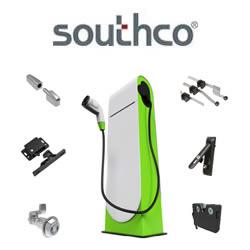Categorizing products as environmentally-friendly by sticking a symbol-type label on its packaging, insults consumers' intelligence.
TELL THEM WHAT YOU GOT - STRAIGHT
Steve Clemens | United Business Institutes
| Categorizing products as environmentally-friendly by sticking a symbol-type label on its packaging, insults consumers’ intelligence. |
 |
|
Steve Clemens, Professor Environmental Economics United Business Institutes |
|
The European Commission’s own Eco-Label Catalogue states: the eco-label award scheme has been in operation since 1992 and has currently twenty-three different product groups, and already more than 250 licences have been awarded for several hundred products. 250 licenses in 14 years? The initiative was and is certainly commendable, and we all understand the mechanics behind it:
Probably, the rub lies in steps 1 and 3. Manufacturers ( should & ) do of course limit their enviro-footprint, but how much energy can they afford to spend on the administrative actions to be undertaken before they get the reward glued to their products’ packaging? Or is it the public ignorance towards the Flower that discourages manufacturers to apply for the reward? The whole idea stands or falls on the condition of consumers’ appreciation of the symbol. What does this Flower mean? Everybody can come up with a nice logo and print it on its packaging, right? Do I trust the manufacturer to have gone through the procedures correctly and truthfully? In other words: is the enforcement adequate to discourage non-compliant manufacturers to simply carry the Flower as well. Are the compliance conditions relevant and tough? Or were they established to please manufacturers’ lobbyists and appease consumers’ worries. And what is the difference between this EC Flower and the other, local labelling efforts? Local labels such as:
Looks like a certification quagmire to me. Here’s what you should do as a manufacturer. Do not invent other new logos or labels that add to the above confusion. Give some credit to consumers’ intelligence and power to make choices. Just put the relevant information itself on the packaging, list-of-ingredients-style. A 10 by 5cm table should be enough to list main pollutants, or absence of, in some sort of order, using standard units. A straightforward eco-label could look like this for e.g. a bloc of printing paper.
The difference with all symbol-based certification schemes lies mainly in the way consumers are regarded. A symbol such as the EC’s Flower basically says:
Trusting consumers’ intelligence indeed. And where is the incentive for manufacturers to go beyond the minimum level of compliance? As always with this type of policies, it would be at a cost to the company. The cost being competitive advantage, or straight from the bottom line. By giving it straight to the consumer, as I propose here, manufacturers can choose how to play out their competitive strengths and weaknesses on a level playing field with the consumers. And as public opinion about the relative importance of pollutants change over time, no new labelling efforts need to be initiated, worked out and re-branded. The invisible hand of the market will give the manufacturer with the ‘best’ enviro-footprint the reward it deserves, and in a competitive business environment, other manufacturers will follow suit. Who wins? Manufacturers win because
Consumers win because :
|
||||||||||
The content & opinions in this article are the author’s and do not necessarily represent the views of AltEnergyMag
Comments (0)
This post does not have any comments. Be the first to leave a comment below.
Featured Product


 European
companies are not exactly standing in line to go through the (quite
lengthy) procedure towards obtaining the green eco-label, symbolized by
a Flower.
European
companies are not exactly standing in line to go through the (quite
lengthy) procedure towards obtaining the green eco-label, symbolized by
a Flower. 


